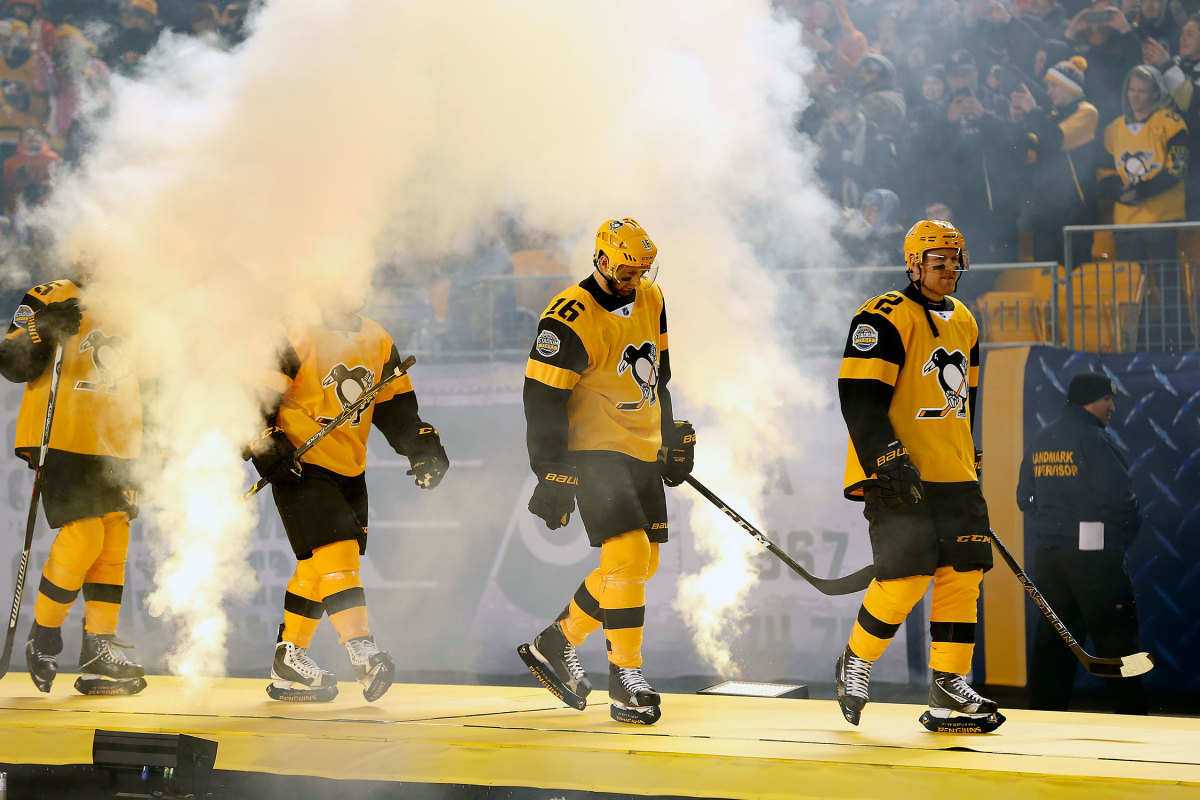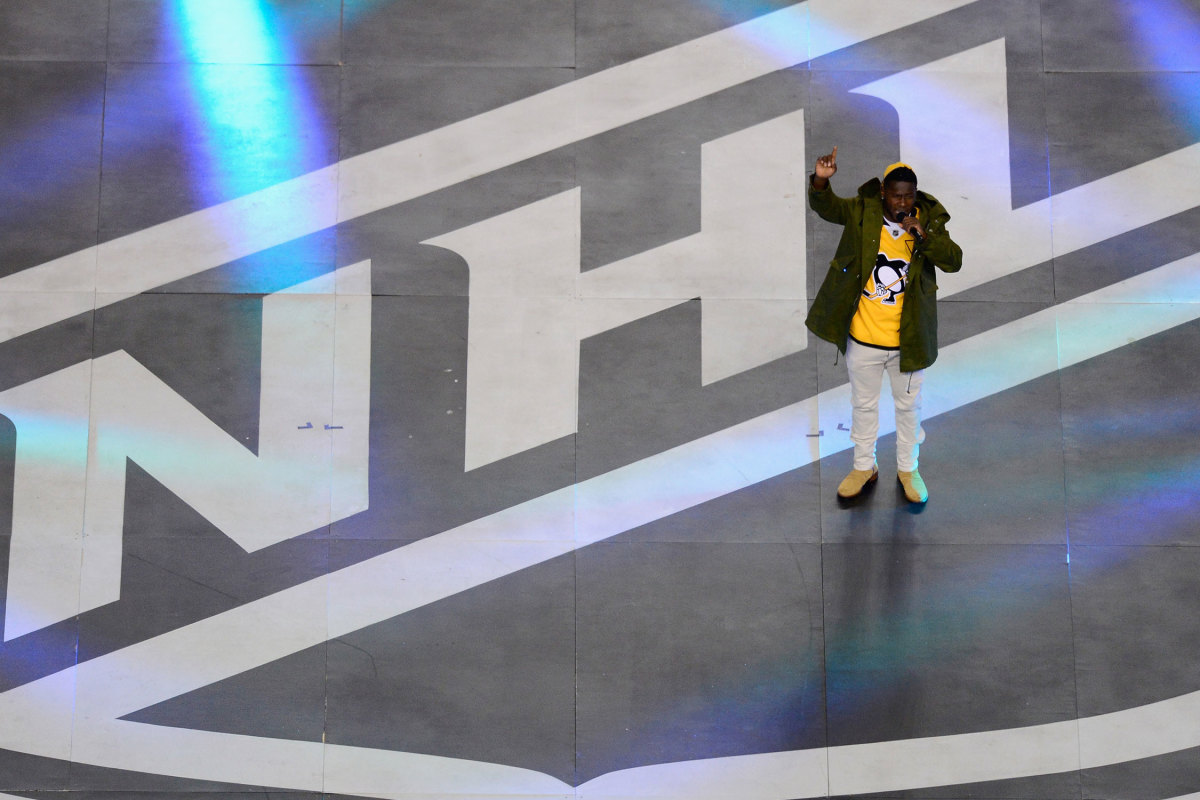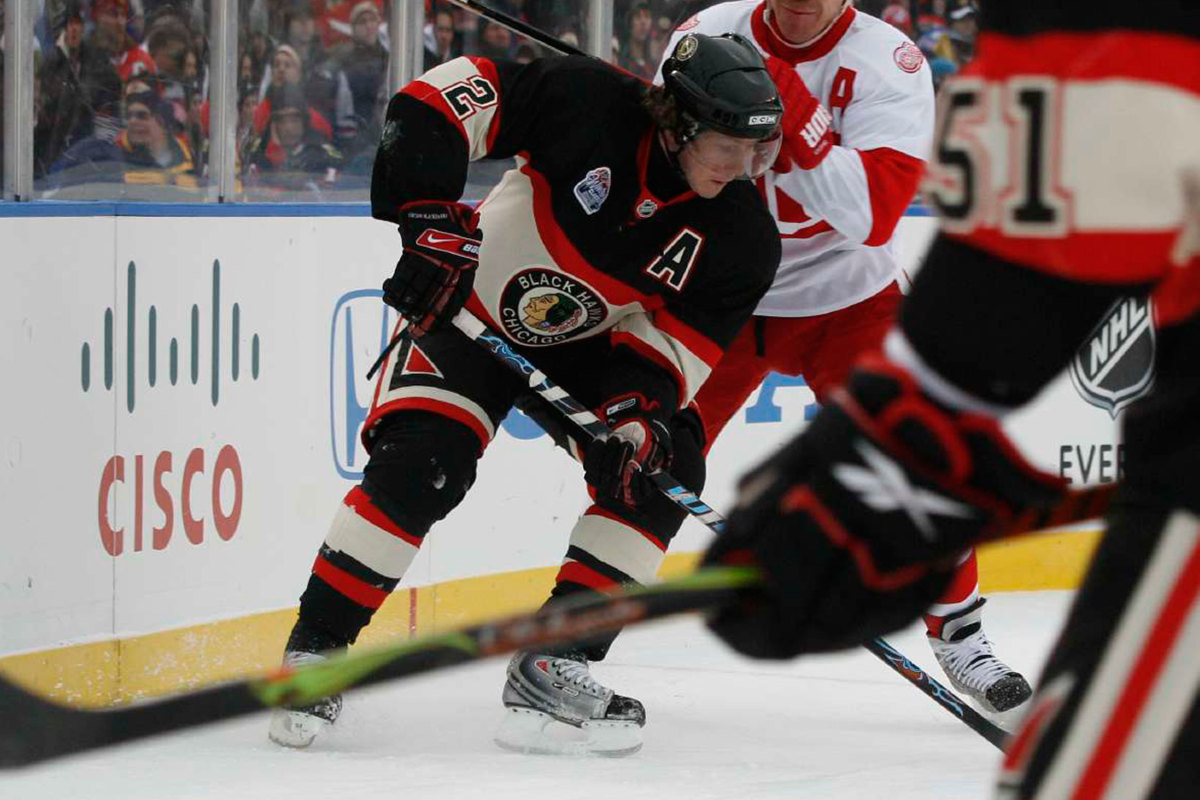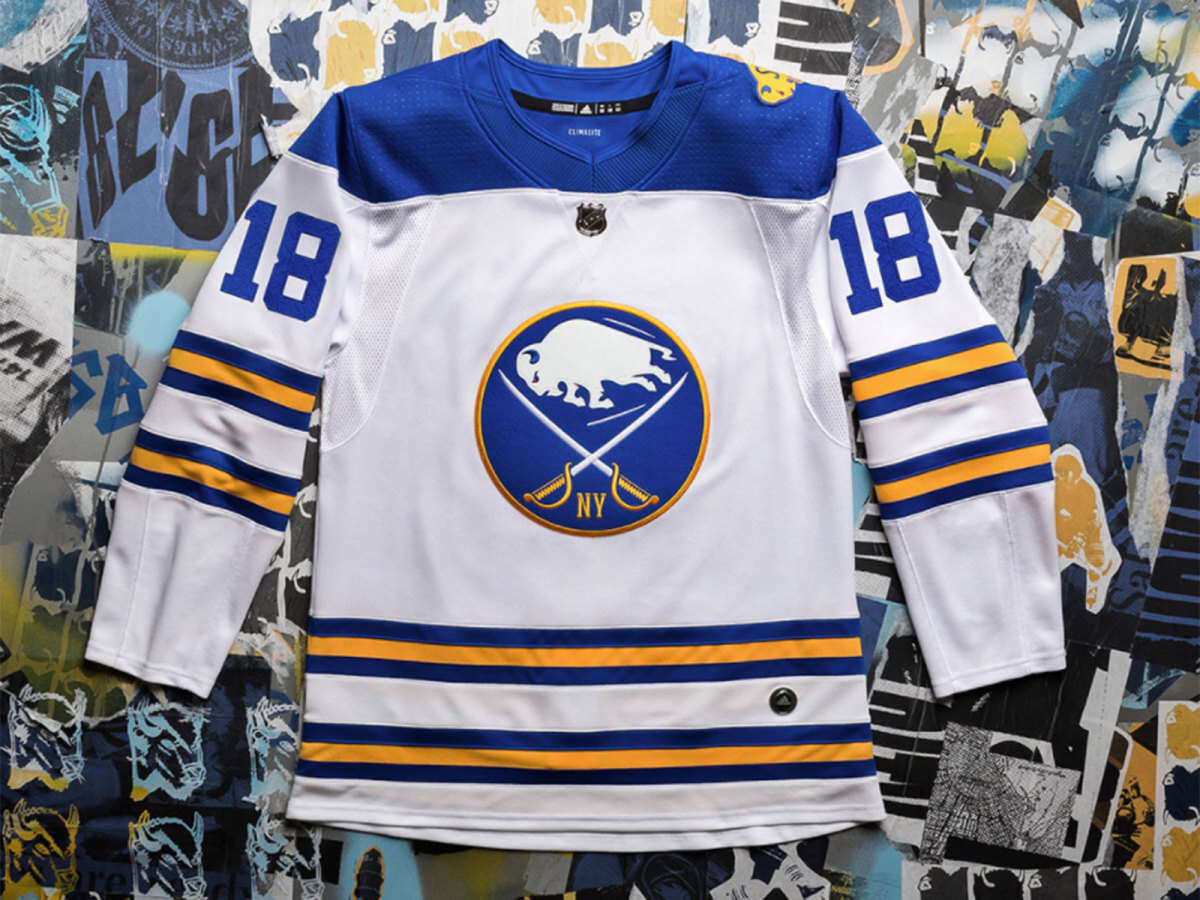Despite ubiquity, NHL strives to make outdoor games special for players and fans

PITTSBURGH ― There may have been 67,318 people gathered around a 200 by 85-foot ice rink to watch the Philadelphia Flyers and the Pittsburgh Penguins, but let’s get this straight: this was far more than just another game.
While all 40 players who suited up for the two teams like to play off the significance of an outdoor game in the days prior—as they are clearly focused on either making a playoff push or seeking to improve their positioning—it’s evident just how powerful of an occasion the Stadium Series is, especially when all is said and done.
“I would like to think that it’s not [just a game],” said Steve Mayer, the NHL Chief Content Officer and Executive Vice President. “I would like to think that after the player’s experienced it they say, ‘Wow, that was super cool’.”
Take Pittsburgh’s Matt Murray, who is as calm as they come between the pipes despite being just 22 years old. He admitted he battled some butterflies. “You try and treat it like just another hockey game, but in reality it's a lot bigger stage.”
His teammate Jake Guentzel is another 22-year-old who picked up a pair of assists in the Penguins’ 4-2 win. He echoed a similar sentiment to Murray about the rush a game of this nature creates. “When you first walk out it's pretty crazy,” he said. “I remember getting the chills.”
Stadium Series winner a bucket list moment for Penguins center Matt Cullen
Even on the losing end, the event is easily one to remember. Flyers winger Pierre-Eduoard Bellemare is a perfect example: He welcomed his mother all the way from his home country of France and the two, along with his wife, were out on the ice for family skate. It’s something he called a “once-in-a-lifetime experience.”
And this is exactly what Mayer and the rest of the NHL have in mind when planning these outdoor festivities.
It’s not just about the three period, 60-minute battle on the frozen of ice; it’s far more than that.
“When you look at all the other sports, every sport has their signature,” Mayer said. “This has become ours. This is really different.”
***
JJ Julius Son broke out into a grin when he began talking about hockey. The lead singer of Kaleo had just wrapped up his sound check and was lounging around backstage.
For Son and the rest of Kaleo, this was a unique experience. All hail from Iceland where soccer is the sport of choice, the four men have grown more and more in love with American sports as they’ve begun gaining popularity throughout the states.
Fittingly, hockey has become one of Son’s newest favorite sports to follow, so when the NHL approached Kaleo about performing at The PreGame, a festival held outside Heinz Field that featured everything from food and games to photo opportunities with the Stanley Cup, they immediately said yes.
“This will be my first hockey game to see,” Son said about five hours before going on stage. “I’ve watched them on TV, but I’m just super excited to be playing and then going in and watching the game.”
“I’m a sports fan. I watch sports on TV and music can emphasize and do a lot. It’s just a huge thing to be a part of.”

Mayer says he and the NHL planning committee spend many months tracking what is popular in the music industry and doing all they can to find the perfect fit. Bringing in Kaleo, who has produced well-known hit songs in ‘Way Down We Go’ and ‘All the Pretty Girls,’ just seemed like an ideal fit for The PreGame event.
During the first period intermission, it was three-time Grammy winner Train that performed on short notice after the original act OneRepublic had to back out the day before due to illness.
“We want to make sure that there’s a little something for everybody,” Mayer said. “We realize that for some people, this could be their first game so you want to suck them in with all the other things we do.
“We know also that there’s a large audience out there that enjoys music and might just watch our game because they like the artist.”
Despite limited history, St. Louis's hockey roots have grown deep
For the 67,318 people who had tickets and the thousands of others who spent the afternoon and evening tailgating and hanging around the city, there is a little bit of everything for them to take in… and that’s exactly what the league has in mind when laying out the spectacle.
***
An easy 10-minute walk up W. General Robinson St. from Heinz Field, passing by PNC Park, the home of the Pittsburgh Pirates, takes you to the SoHo Bar and Restaurant.
The bar was transformed into a Pittsburgh and Philadelphia hockey fan’s dream as three of the organization’s biggest stars of yesterday lined up for a half hour talk followed by a meet-and-greet at the Coors Light Beer Summit about five hours before puck drop.
The lineup featured two Hall of Famers in ex-Flyers forward Eric Lindros and former Penguins defenseman Paul Coffey, along with one of the highest-scoring Americans ever and current NBC Sports analyst Jeremy Roenick.
This was yet another one of those “once-in-a-lifetime” moments as the three greats told tales of their playing days ranging from lighter subjects such players they hated to play against to more serious subjects such as concussions, where Lindros, who saw his career cut short because of this issue, very openly discussed how the league’s progress is admirable but nowhere near where it can be.
While the fans in attendance all soaked in every sentence, the former players, too, soaked in everything this moment had to offer.
“The NHL has nailed it,” Coffey said. “They have a really good thing going here.”
To sum up just how valued these outdoor games have become in the NHL community, all three panelists wished they had the opportunity to participate in a regular-season outdoor game during their playing days.
These men accomplished nearly everything there is to in the game, but they can tell what they’re missing out on—it says a lot about how powerful these events have become.
“When a player downplays [an outdoor game], it’s crazy because a lot of players will say they never had an opportunity in my career to play in an outdoor game,” Mayer said. “It’s part of their being.”

“It’s the practice before and the families around and you’re playing outside,” Lindros said. “Every kid grew up playing outside and getting on that ice. It’s incredible, it brings back that outdoor experience.”
***
The NHL likes to think of the scene within the stadium as a “three-ring circus.”
At Heinz Field, a person sitting in Section 111 sat right in front of a sheet of ice that featured seven live penguins from the Pittsburgh Zoo and PPG Aquarium. Someone who bought seats in section 223 overlooked a house band that was playing right below them.
All of this going on while there’s two teams dueling it out on center stage.
“A lot of our choices and the things we’re trying to do is based on connecting with sports fans who might become hockey fans,” Mayer said. “Hockey fans are obsessed with the sport and rightfully so, they’ll watch it no matter when. There’s a lot of fans out there that we know if we can get them to watch a game, they’re going to love it.”
Everything—literally, everything—is well-thought out when it comes to an outdoor game. The entrance and walkway that the players take from the tunnels out onto the ice is an extremely tenuous task.
In this case, being in The City of Bridges, Mayer and his staff designed a bridge setting for the players to walk across. When looked at closely, the bridge cuts up at just the right angle so that the players are led straight to the rink. This was engineered specifically to fit the layout.
For the thousands of fans seated, the stadium looked nothing like the home of the Pittsburgh Steelers. That’s because there wasn’t a single blade of grass visible. The league does all it can at “transforming the environment” to ensure the audience is in awe at how special the scene is.
History of the NHL’s Winter Classic Jerseys
Buffalo Sabres, 2008

The Sabres went back to a design used from 1978-89 through 1995-96 for the first Winter Classic game, revisiting the buffalo over crossed sabers logo on a white jersey.
Pittsburgh Penguins, 2008

As part of the league's first Winter Classic, the Penguins went back to their color scheme from 1967 and quickly adopted the the retro jerseys as alternates for the following season.
Chicago Blackhawks, 2009

The Blackhawks went back to 1936-37 for inspiration in the 2009 Winter Classic, going with a black jersey with beige and red horizontal stripes.
Detroit Red Wings, 2009

The white-based jerseys are a throwback to those worn circa 1926-27, including an old-school logo on the chest with a current 'winged wheel' on the shoulders. "The Old English ‘D’ served as the hockey team’s very first logo and is widely recognized as a symbol for our city and its sports teams,” Red Wings GM Ken Holland said.
Philadelphia Flyers, 2010

The Flyers' jerseys bear a striking resemblance to the 1967-72 version worn at the team's inception. "Flyers players will proudly wear special retro jerseys which reflect a look of our early years which evoke very special memories of playing against the Boston Bruins, including our first Stanley Cup victory," Flyers founder Ed Snider said at the unveiling.
Boston Bruins, 2010

The gold uniforms harken back to those worn by the Bruins for their first Stanley Cup in 1929, as well as some other historic nods—including a variation on the original spoked 'B' and laces on the jersey as a throwback to the Big Bad Bruins of the 1970s.
Pittsburgh Penguins, 2011

The Penguins went light blue-on-navy for this jersey, which features several different elements from the franchise's uniform history—including the ever-popular skating penguins logo. "We wanted to create a uniform that celebrates the rich history of Penguins hockey, but with a new look," Keith Leach, Director of Merchandising for Reebok said.
Washington Capitals, 2011

The Capitals didn't have to go too far back to capture the nostalgia of these 1970s era throwbacks. Despite a few modernizations, the jerseys were popular enough to come back as the team's alternates the following season.
New York Rangers, 2012

The retro style of these Rangers duds pay tribute to the Original Six tradition, featuring colors from the team's 'Heritage Jersey' and a vintage shield inspired by the franchise's original 1926 logo.
Philadelphia Flyers, 2012

These bright orange numbers combined a number of elements for the Flyers. "Our new jerseys... combine the classic Flyers orange and black with our iconic Flyers Crest," said Peter Luuko, then the team's president. "We believe these new jerseys represent our past, present and future."
Detroit Red Wings, 2014

The Red Wings' getup for the 2014 game featured a striping pattern and arch Detroit wordmark inspired by the late-1920s Detroit Cougars and an early iteration of the winged wheel logo, circa 1930.
Toronto Maple Leafs, 2014

The Maple Leafs contributed to a color-on-color matchup with a look inspired by the team's 1927 jerseys, the first time the franchise had worn blue.
Washington Capitals, 2015

The Capitals' 2015 garb is more of a collection of tributes to pro hockey in Washington. The deep red symbolizes the team's roots in the city, while the shoulder stripes go back to the 1930s. Add in the oversized 'W' on the chest and you get a unique-yet-familiar look.
Chicago Blackhawks, 2015

The Blackhawks didn't stray too far from the their current look with these 1957 throwbacks, with the jerseys getting a few retro tweaks, most notably the colors on the shoulder tomahawk logo.
Boston Bruins, 2016

For the 2016 Winter Classic, the Bruins looked back to their 1924 uniforms for inspiration, including the logo, striping pattern and numbers. A crewneck collar was developed for the jersey, giving it a more literal 'sweater' feel.
Montreal Canadiens, 2016

Montreal went pretty far back to their roots for this display, specifically to the 1924-25 season. The updated jerseys feature the team's slightly altered version of their world champions crest.
Chicago Blackhawks, 2017

The Blackhawks’ 2017 Winter Classic uniform “is inspired by the playing era of legends Stan Mikita and Bobby Hull. The uniform stands as an homage to the legends of the past while preserving the classic aesthetic of the franchise by using details from uniforms of the late 1950s and early 1960s.”
St. Louis Blues, 2017

The Blues’ design harkens back to the franchise's first season, 50 years ago in 1967. "we are proud to pay tribute to our original uniforms and the franchise pioneers who first wore them in 1967,” Team owner Tom Stillman said.
Buffalo Sabres, 2018

The uniform is meant to recall the Sabres’ 48 years of history, including a slightly modified version of the charging buffalo crest. It includes three secondary logos: a buffalo shoulder patch, a pair of crossed swords and a script wordmark.
New York Rangers, 2018

The navy in these jerseys replaces the team’s usual royal blue color as a nod to ‘the roots of the game outdoors,’ while the stair-step font is inspired by the Rangers lettering of the 1920s.
Add in some pyrotechnics, a fog machine and the Steelers’ All-Pro wide receiver, Antonio Brown hyping up the crowd, and you have a pretty special sight to see upon introductions.
“I think our biggest feedback is that these games are incredible, the spectacle and you get a little of everything,” Mayer said. “From the time you walk in you don’t know where to look. It’s a three-ring circus here. For us it’s like creating a whole ‘where do I look next.’”
***
It’s more than a game.
This isn’t a secret anymore. The players, in the moment, can downplay its significance but this is more than a three-hour ordeal. It’s a weekend that fans and players alike will remember forever.
“You know, these events I think are so unique,” said Pittsburgh head coach Mike Sullivan. “I think they're all different in their own right, depending on the venue. But all of the environments, all the atmospheres, they're electric. I think it's a great opportunity for all of us to experience it.
“It brings everybody back to their childhood days when they were skating outside on the pond.”
Mayer, who just wrapped up his first run of outdoor games this season as the head planner, is very open to fans’ feedback. He knows there were some concerns of the event being watered-down, but he believes they’ve found the perfect amount of outdoor games per season to be in the three to four range.
The point being, these outdoor events aren’t going anywhere—as Mayer said, they’ve become the league’s signature event.
Matt Cullen, who scored the game-winning goal, summed up the event in the best possible way: "I gotta tell ya, I don't know if I've had more fun playing hockey. It was such a fun night… I was just kind of blown away by the atmosphere.”
